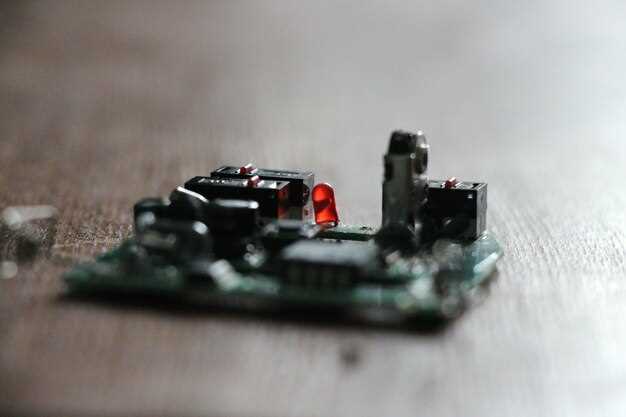
Battery drain is a common issue that many users face, impacting the performance and longevity of their devices. Whether it’s a smartphone, tablet, or laptop, understanding the reasons behind excessive battery consumption can help mitigate this problem. Implementing effective diagnostics can lead to identifying the root causes and applying the appropriate solutions.
Several factors contribute to battery drain, ranging from software settings to hardware malfunctions. Applications running in the background, high screen brightness, and outdated software versions can all lead to an accelerated loss of power. By recognizing these common culprits, users can take proactive measures to optimize their devices and extend battery life.
In this article, we will explore the most prevalent reasons for battery drain and provide actionable solutions. Whether you’re a casual user or a tech enthusiast, understanding these factors will enable you to maintain your device’s efficiency, ensuring you stay powered throughout the day.
Excessive Background App Activity

Excessive background app activity is a common cause of battery drain in smartphones and tablets. Many applications continuously run in the background, updating content, receiving notifications, or performing tasks without the user’s direct interaction. This constant activity can deplete battery life significantly, especially if multiple apps are running simultaneously.
Users can reduce battery consumption caused by background processes by performing regular diagnostics. Most devices offer built-in tools that provide insights into battery usage, highlighting which apps are consuming the most energy. By accessing these diagnostics, users can identify problem apps and decide whether to limit their background activity or uninstall them altogether.
To manage excessive background app activity, consider adjusting the settings for each application. Many operating systems allow users to restrict background data, disable automatic updates, or turn off notifications for apps that are not essential. Additionally, enabling battery saver modes can automatically limit background activity to preserve charge, extending the device’s overall battery life.
Screen Brightness and Idle Settings
Screen brightness settings greatly impact battery drain on mobile devices and laptops. High brightness levels can significantly shorten battery life due to increased power consumption. Adjusting these settings is an essential part of effective battery diagnostics.
Here are common factors related to screen brightness and idle settings that contribute to battery drain:
- Brightness Levels: Keeping the screen at maximum brightness or using a high automatic brightness setting can lead to faster battery depletion.
- Screen Timeout: Long idle times without screen dimming can keep the display active, increasing power usage unnecessarily.
- Adaptive Brightness: While this feature attempts to optimize brightness based on surroundings, it can sometimes lead to fluctuating brightness levels that may use more power in certain conditions.
To minimize battery drain related to these factors, consider the following solutions:
- Adjust Brightness Manually: Set your screen brightness to a moderate level that is comfortable but energy-efficient.
- Utilize Automatic Brightness: If you prefer automatic adjustments, ensure that the feature is calibrated correctly to avoid over-brightening.
- Reduce Screen Timeout: Set your device to dim the display or turn off the screen after a short idle period, such as 15 to 30 seconds.
- Activate Power-Saving Mode: Use battery saver settings that automatically adjust brightness and screen timeout based on your usage patterns.
Implementing these strategies can help you maintain optimal battery performance while also enhancing your overall device experience. Regular diagnostics can further assist in identifying other sources of battery drain beyond screen settings.
Location Services and GPS Usage
Location services and GPS functionality are crucial features in modern smartphones and tablets. However, they are significant contributors to battery drain. When location services are enabled, your device continuously communicates with satellites and nearby cell towers, consuming substantial battery power.
Battery drain from GPS usage can be exacerbated by the frequency and accuracy of location updates. Apps that require high precision for navigation or location tracking can keep the GPS on for extended periods, leading to a decrease in battery life.
To diagnose and mitigate battery issues related to location services, consider the following strategies:
| Issue | Solution |
|---|---|
| Continuous GPS usage by multiple apps | Review app permissions and restrict access to location services for non-essential applications. |
| High accuracy location settings enabled | Switch to a battery-saving mode in location settings that uses Wi-Fi or mobile networks for location rather than GPS. |
| Location services constantly active | Disable location services when not in use or set apps to use location only while actively in use. |
| Apps running in the background | Force stop or uninstall applications that excessively consume battery due to background location usage. |
Regularly check battery diagnostics to identify which apps or services are draining your battery the most. Effective management of location services can greatly enhance your device’s battery performance.
Battery-Hogging Features and Connectivity

Modern smartphones and devices come packed with features designed to enhance user experience. However, many of these functionalities are known for causing significant battery drain. Understanding these battery-hogging features is essential for managing and extending your device’s battery life.
One major contributor to battery drain is location services. When enabled, GPS continuously communicates with satellites to provide accurate positioning. Frequent usage of location-based apps can lead to substantial battery consumption. To mitigate this, consider adjusting your location settings to “Battery Saving” mode, which uses Wi-Fi and mobile networks instead of GPS.
Another culprit is background app activity. Many applications perform diagnostics and sync data in the background, which can quickly contribute to battery drain. Regularly reviewing and managing app permissions, along with disabling background activity for non-essential apps, can lead to noticeable improvements in battery performance.
Connectivity features, such as Bluetooth and Wi-Fi, also play a role in battery consumption. Keeping Bluetooth on when not in use or having multiple Wi-Fi networks constantly searching for connections can increase power usage. Turning off these features when they are not needed can help conserve battery life significantly.
Push notifications from email and social media apps can further contribute to battery drain. These notifications require constant connectivity to update in real time, leading to increased battery usage. Reducing the frequency of fetch requests or disabling push notifications for less important apps can help minimize the strain on your battery.
Lastly, using features like always-on displays and high screen brightness can quickly deplete battery reserves. Adjusting your screen timeout settings and reducing brightness can help extend usage time without frequent recharging.
By being aware of these battery-hogging features and connectivity options, you can implement effective solutions to prolong your device’s battery life and enhance your overall experience.
Old or Faulty Battery Performance
The performance of a battery diminishes over time due to various factors, leading to significant battery drain. Understanding how an old or faulty battery impacts device functionality is crucial for maintaining optimal performance.
Here are some key indicators of battery deterioration:
- Shorter Usage Time: If your device drains power much faster than it used to, it may be a sign the battery can no longer hold a full charge.
- Frequent Overheating: Excessive heat during charging or usage can indicate battery issues, often leading to further damage.
- Swelling or Physical Damage: Any visible deformation of the battery casing suggests serious underlying problems that need immediate attention.
It’s important to perform regular diagnostics on your battery to gauge its health. Here are some methods to assess battery performance:
- Battery Life Test: Monitor how long your device lasts on a full charge compared to initial performance.
- Voltage Check: Use a multimeter to measure voltage output. A significant drop indicates the battery may be failing.
- Battery Health Apps: Many devices support applications that provide detailed analytics about battery wear and capacity.
If diagnostics reveal that the battery is indeed old or faulty, consider the following solutions:
- Replacement: The most straightforward solution is to replace the battery with a new one that meets manufacturer specifications.
- Calibration: Sometimes recalibrating the battery can help restore some of its original capacity. This involves fully charging and then fully discharging the battery multiple times.
- Battery Management: Optimize app usage and reduce background services to lessen the battery strain while you prepare for a replacement.
Addressing battery performance issues is essential for prolonging the life of your device and ensuring it functions effectively. Regular diagnostics and timely replacements can make a significant difference in your device’s overall health.
System Updates and App Compatibility Issues
One of the common reasons for battery drain is related to system updates and app compatibility issues. When a new operating system version is released, it often comes with numerous enhancements and features designed to improve performance. However, these updates may inadvertently lead to increased battery consumption, especially if the software is not fully optimized for existing hardware.
Updates can introduce background processes that require additional resources, leading to a noticeable drain on battery life. For example, changes in core services or new functionalities, such as location tracking or background app refresh, can significantly impact how much power your device uses. Users should monitor their battery usage statistics to identify any spikes associated with new updates.
Moreover, app compatibility issues can exacerbate battery drain problems. When apps are not updated to align with the latest system changes, they may behave unpredictably, often utilizing more energy than intended. Incompatibilities can lead to excessive wake time for apps, causing the processor to work harder and, consequently, draining the battery more rapidly.
To mitigate these issues, conducting regular diagnostics is essential. Users should ensure their devices and applications are up to date with the latest versions, as developers frequently release patches to address compatibility problems. Additionally, uninstalling or disabling applications that consistently perform poorly with the latest system version can help improve battery performance.
Ultimately, staying proactive about system updates and app management can significantly reduce battery drain and enhance overall device performance.
